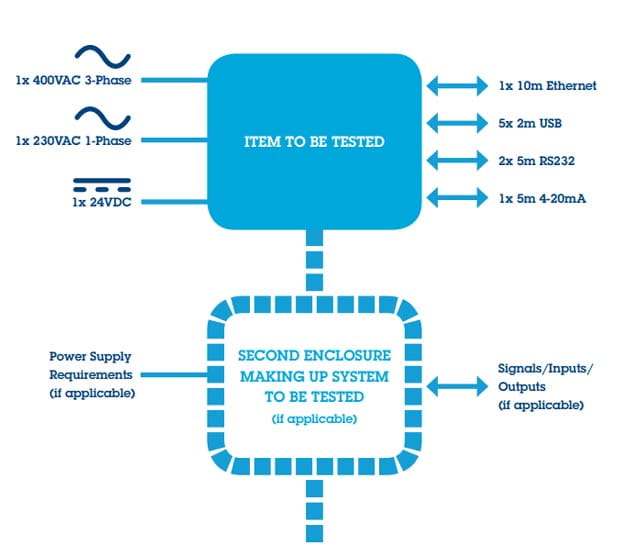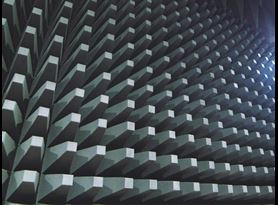Are you ready for EMC Testing? Your EMC test plan and checklist

James Daniels is the General Manager of Element’s Connected Technologies business in the UK, currently responsible for Operations in our Hull, Skelmersdale, Malvern, Wimborne and Oxford laboratories.
Element’s team of EMC Engaged Experts have put together the following 8-point checklist, EMC test plan, and product block diagram example to help ensure that you are fully prepared to present a device for EMC testing.
Your 8-point EMC checklist
Consider these key questions within our checklist before submitting your EMC testing request to help ensure you can expedite your testing and get your products to market faster.
1. Exercising & monitoring functions
How will you exercise and monitor your product during testing? All functions should be considered.
2. Cycle length of functions
Are you able to tell us how long your equipment takes to do one full cycle of functions? This is important because the Radiated RF and Conducted RF immunity tests are performed across a defined frequency range at 1% frequency increments, with the applied RF field applied for a minimum of 3s at each increment. It is not a problem if it takes longer to verify performance, but this will increase the time needed to perform the test and hence can increase the cost.
3. Product modes
Does the product require testing in several modes? How many modes of operation does your product have (including standby/idle)? For testing purposes, EMC should be considered in all modes, although it may be possible some or all of these modes in a single worst-case mode of operation.
4. External ports
Have you ensured all external ports are terminated with a representative load?
5. Cable lengths
Have you ensured appropriate cable lengths are supplied (some tests require longer cables)? The test laboratory should be advised of the maximum length of cables that could be connected to your product, in accordance with your installation instructions.
6. Failure delays
Have you prepared for failure? It's important that you build in contingency time for your project or consider pre-compliance testing. Find out more about EMC compliance to reduce risk.
“54% of products fail EMC testing the first time around so make sure you build in contingency time to your project timescales. Have you considered pre-compliance testing as a way of limiting the possibility of costly failures?”
7. Special requirements
Are there any special requirements, such as loads, supplies, radio signals, or support equipment for your equipment? If so, you will likely be required to provide these.
8. Product set-up
Are you able to tell us how long it takes to set up your product?
Running through these eight key questions in advance will enable you to be better prepared for EMC testing in the future.
Product information for EMC test plan
Supply the below product information within your test plan.
- Model name / number.
- Dimensions and weight.
- Power supply requirements.
- Brief description of the functionality of the system, including details of the environment where the system will be used.
- Test specification required (if known). We can advise if unknown according to the functionality of the equipment and the intended environment(s) it will be used in.
- Signal or I/O cable arrangements – we need to know the number of cables between individual enclosures of the system, and cables to/from the boundary of the system.
Cable information for EMC test plan
- Type
- Length
- Shielded or unshielded (For example: 20m CAT6 Ethernet, 10m Shielded RS232, 1.8m unshielded USB, etc.).
- If unshielded, please advise of the number of individual conductors/cores.
Product block diagram
It’s often required to supply a data sheet or basic block diagram of the system, to show hardwired connections to/from the equipment and between enclosures of the system.
Here is an example of a product block diagram for EMC testing preparation. It’s recommended to add annotations for if signal cables are shielded, and if unshielded, include the number of cores.

To download a full list of requirements that are generally expected to be provided alongside a product for EMC testing, please see our EMC technical guidance information.
If you would like further advice about your EMC testing requirements and preparing a product for testing, please contact our experts today.
Find related Resources
More from Element

EMC Testing
Element is one of the largest independent EMC testing companies in the world. Find out about our comprehensive testing capabilities in the UK, Germany, US and Korea.

CE Marking and Testing
CE marking is a mandatory conformity mark enabling you to enjoy free movement between all 28 Member states.

EMC Risk Assessments
EMC risk assessments are a combination of analysis & evaluation of potential EM hazards associated with the product & environment. Read our free guide.

Global Market Access
We help you to navigate complex regulations, getting your products to market quickly and efficiently in over 160 different countries.

